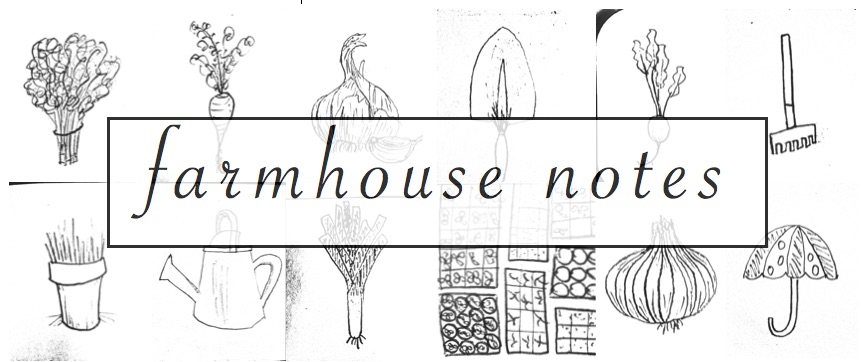As we picked apples the other day, I was thinking about a verse in Psalm 1: the one whose delight is in the Lord is like a tree planted by streams of water, that yields its fruit in season.
That phrasing sounds so modest, until you see a monstrous mature apple tree—and "yielding" becomes heavy with fruit, churning out pounds of it by the hundreds, fruit that is crisp and sweet and flawlessly white when you cut inside. Fruit that you can pick sixty pounds of without too much effort or time on a sunny summer evening.
We're just now emerging from three evenings of processing the apples, long hot evenings of coring and chunking, cooking and blending, and boiling and boiling water. It's not a bad way to spend a summer night, especially if you blast some Etta James, drink cold beer, and consume massive amounts of zucchini fritters and fresh tomatoes for sustenance.
For most of the last few weeks, though, we haven't had the time to devote to canning marathons like that; we've had a steady stream of summer guests and activities. Vegetables may be expiring on my counter, but people must also be fed--now, not in the fall! And of course I yield to the call of outside summery things like hiking, river rafting, and plain old relaxing in the front yard with family, dogs, and glasses of fresh iced apple juice.
But still, those vegetables call to me for help, and I'm loathe to just let them totally expire on the counter. Here's what I've tried so far that is fast and, unlike canning, very easily multitasked:
Zucchini
Cut the blossom end off, but leave the stem end on for a handle. Grate it up on a microplane (or with a food processor grating attachment, but I lost mine in the move and have found that a microplane takes hardly any time anyway); use the stem end handle with caution so you don't grate off your knuckles. Steam blanch for 1 or 2 minutes. Portion into ziplock bags, zip closed, and immediately dunk in an ice bath to cool. Freeze--and have zucchini fritters year round!
Tomatoes
Our tomatoes are ripening so slowly right now, and I'm harvesting just a handful of the paste varieties at a time. Not enough for a big canning to-do, and anyway, I've sworn off tomato canning for the year; I detest seeding and peeling them. My favorite way to small-batch process them is this: Chunk up as many as you have, heat in a pan until soft and juicy (about 10 min), and immersion blend. Cool and freeze. I did just enough for a quart ziplock this afternoon while I made some lunch. No time at all, and the tomatoes are saved! Phew.
Cucumbers
I've recently become so obsessed with eating pickles at lunch (with cuts of smoked salmon, slabs of cheese, a hardboiled egg, and cherry tomatoes) that I seriously must can more, or else we will run out in October. But sometimes there's no time for that, so I've been fermenting them.
You don't even need to chop the pickling cucumbers (or you can, if they are bigger than 5 inches). Just wash them gently, pull off any blossom, and layer them in a half-gallon mason jar with some pickling spice, garlic (don't peel, just cut in half), and grape leaves. Cover in a brine of 1 quart water + 3 tablespoons salt, and make sure the pickles are submerged; a half-pint jar fits perfectly in the mouth of a half-gallon jar as a weight. Place a dish towel over the top. Leave on the counter for a week or so, until the brine is cloudy and the cucumbers look like pickles. Move them to the fridge, where they'll keep for a long time.
What I love about this is that you don't need a recipe, or any measuring utensils, or any specific amounts of anything. Small batch it, big batch it, do it while you make dinner.
Celery
We didn't grow any, but our landlord gave us a bag of beautiful stalks the other day. You can chop and freeze them without blanching--leaves included. The fragrance of celery leaf perfumed the whole kitchen as I bagged them up. Use in soups and stews in the wintertime.
Berries
Spread them whole in a single layer on a sheet pan, cover with plastic wrap, and freeze for a few hours. Then transfer to gallon ziplock bags. There will be plenty of time to make loads of blackberry jam in the winter...
What else? What quick-preserving ideas have saved your veggies this summer?














